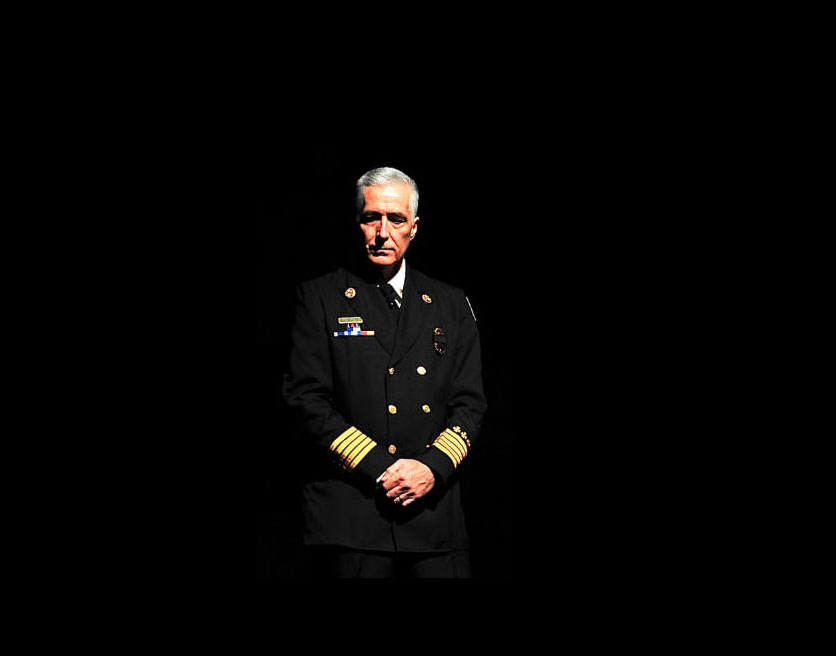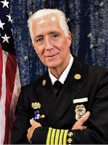
Editor’s Opinion ❘ By BOBBY HALTON

Over the years, we have had many important debates. Some have resolved themselves: Everyone now is pretty good with motor-powered vehicles, and the horses have been put out to pasture. Most sentient firefighters are good with not breathing smoke, although there are still a few closet “smoke eaters” out there. We still have a few “golden oldies” debates alive like smooth bore vs. fog nozzles, which has been going on now for about 50 years. Lately, a few new ones are being exercised: Always hit it from the outside prior to entry, never hit from the outside prior to entry, always lay in, never lay in, and always do a 360 except when …. But the nature of these conversations has a consistent theme—always or never this; always this way, never that way.
The scientific community says it this way regarding conflicting ideas: “The scientific process requires constant external challenge and criticism to reach an approximation of the truth.” Comedian and social commentator Greg Gutfeld has a construct that helps us regular folks to see the nature of our dilemma. He calls it the “prison of two ideas.” The prison of two ideas means that we believe or feel so strongly that if one thing is true then the other idea or concepts cannot be true. It is as if we are constantly in search of that “silver bullet.” It is kind of goofy because if there is one thing that is absolutely true in our business, it is that one size does not fit all. Some authoritarians are forever crying that the fire service needs a “dogma,” a written set of infallible tactics codified in a universal playbook. These folks are generally “paper” firefighters, and dumb.
It is intoxicating, this sense of infallibility, and no one is immune, despite how proud you are of your humility. Often, we feel so strongly about one thing that we can’t see any value in or possibility of utility in the other. Some of our deeply held positions are absolutely valid and are borne out by our local experience. In other words, our success with the tool or tactic locally makes us so comfortable with it that alternatives seem counterintuitive. If it is working, why should we change? Make no mistake, this is a completely legitimate position. Change for change’s sake is a bad idea.
So, how can we make ourselves more open to alternatives when it seems to go against our own human nature? It is tougher than it sounds. Over tens of thousands of years of evolution, we have developed a very elegant sense of intuition. Intuition is a deeper concept than hunches; it is how the very sophisticated human brain processes a lifetime of learning and experience and, in milliseconds, helps us make a decision or choice and helps us act, most often correctly. The key is pattern matching. We can identify patterns and match courses of action from those patterns, and we do it unconsciously, instantaneously, and effortlessly.
Take smooth bore vs. fog. Every firefighter has had the opportunity to operate several styles of nozzles—smooth bore, combination, automatic, air aspirating, and fog in general. Often, in training or in our travels, we get to use tools and nozzles we don’t have at home. Even on our own rigs, we generally have at least the two major contenders. The one we prefer, the choice for routine operations or regular use, boils down to the local environment, history, and custom.
The smooth bore team has history, widespread urban application, reach, penetration, even hydraulic overhaul. It has been in use for hundreds of years, and its maintenance is almost zero. It is effective and almost failureproof, so the case for smooth bore as the go-to tip is now and always has been very strong. Much of the above is also true of the other tip choices. If you have 3-D or gas fire emergencies, fog is the choice. Fog nozzles are extremely versatile, and the ability to go from straight to wide pattern is the default in many situations.
There are pros and cons of every point of view, every tool option, every organizational structure. To that point, some good firefighters say, “EMS is destroying the fire service,” and to them, that’s the truth. If so, somebody better get Ed Croker to fix that line from “No Ambition But One,” where he says, “But, above all, our proudest endeavor is to save lives of men—the work of God Himself.” Yep, old Ed was saying, “EMS good.” But even today, some fail to recognize that some of the finest firefighters in the world are dual-role EMT/paramedic firefighters. Those guys and gals have no problem “crawling down dark hot hallways” or managing a complicated stroke patient. Yep, they do both—maybe not at the same time, but they do both.
Two ideas can exist at the same time. We can use smooth bore tips and fog. We can darken down a fire and then go make our interior attack, or not; it depends on a lot of things. Sometimes we should lay into the fire and sometimes we should go on tank water. We can train our folks to do one skill set—firefighting or EMS—and, in some places, that is great and works fine; or, we can have dual-role, cross-trained firefighter medics. When you run into folks who are stuck in the prison of two ideas, remember: They are not bad folks, but maybe they didn’t have a puppy, or they don’t get out much. And remember, as you notice the splinter in their eye, we may have a log in our own.


